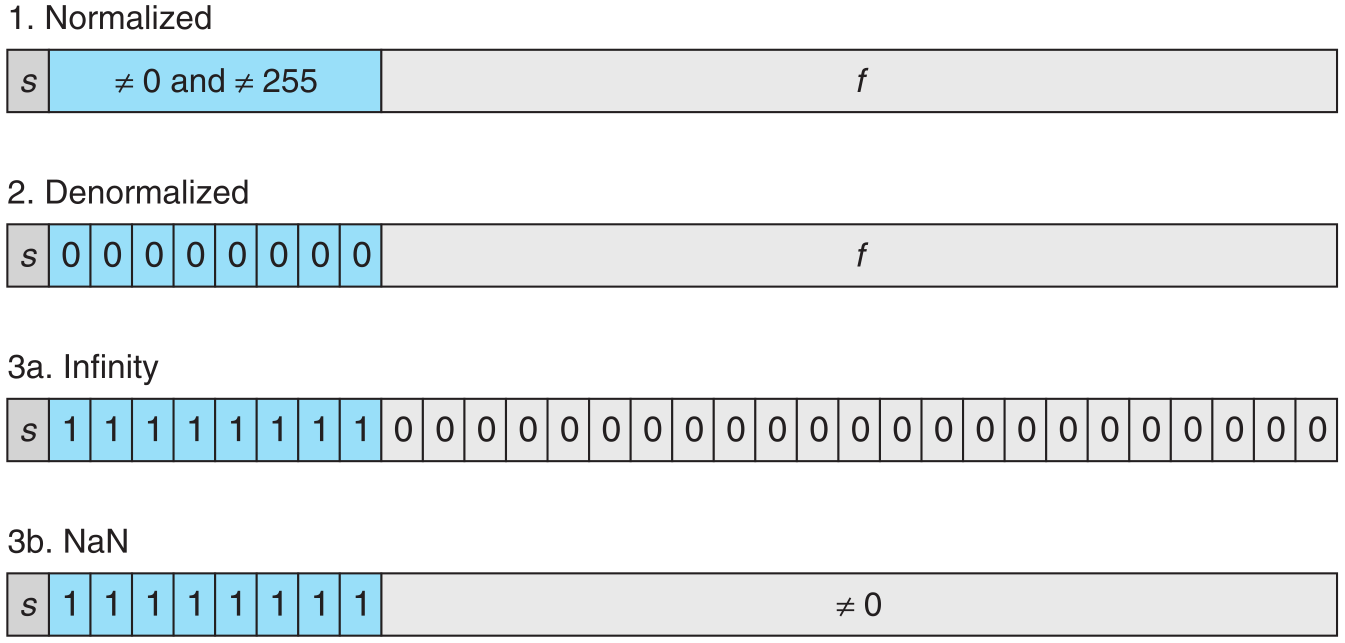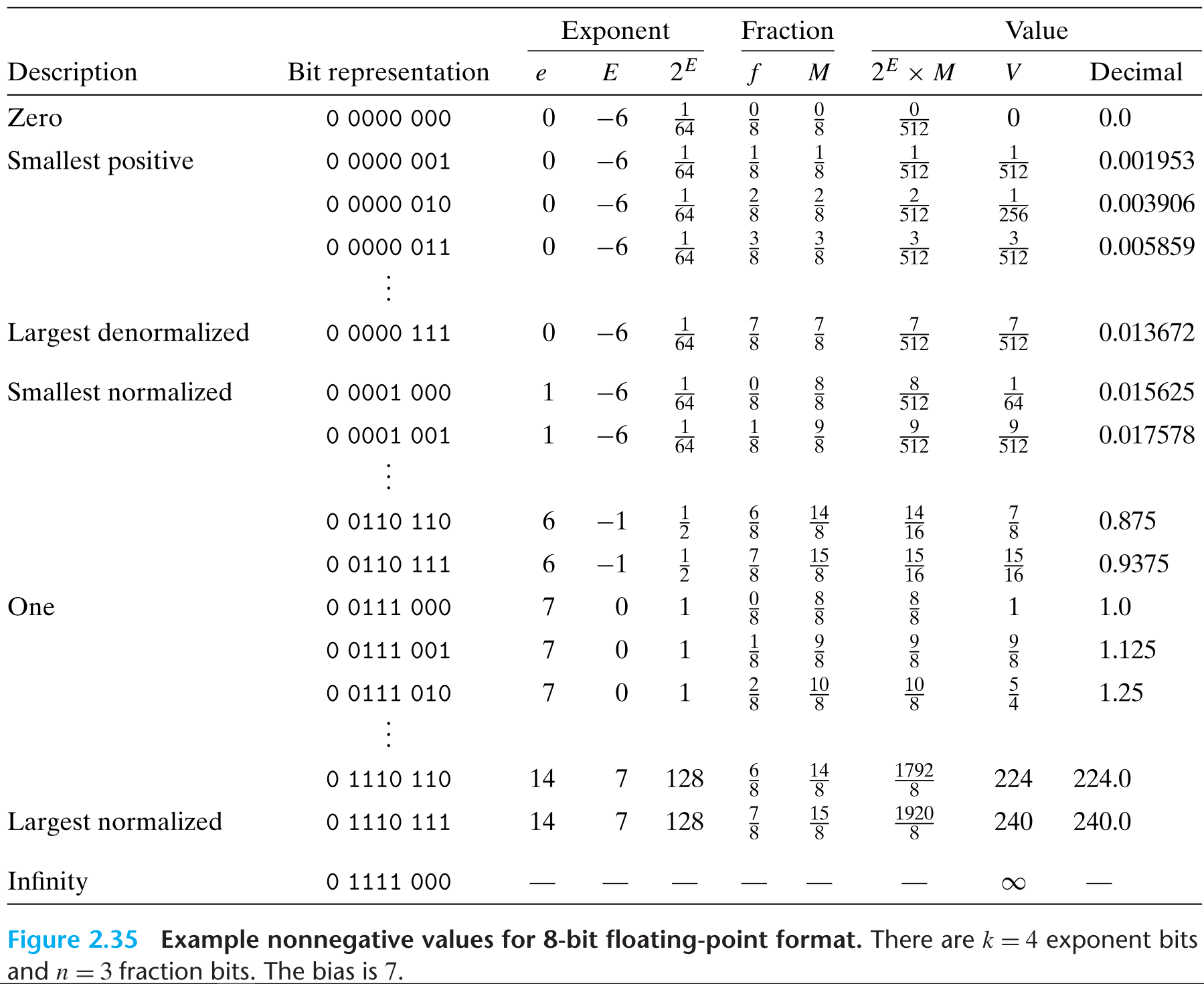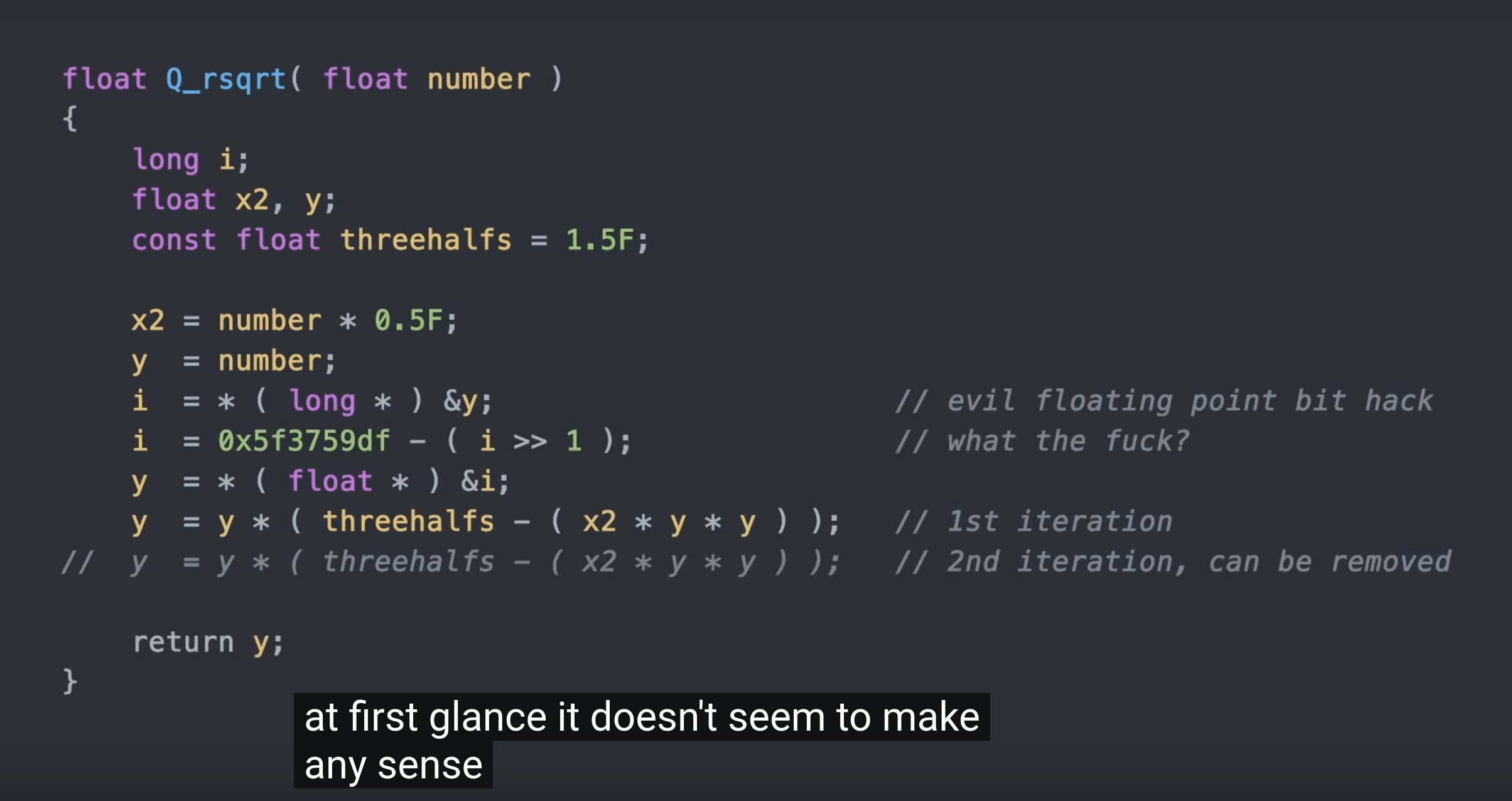Blog: Introduction to Floating Point Number
- sign s
- negative: s=1
- positive: s=0
- exponent E
- weights the value by a (possibly negative) power of 2
- significand M
- fractional binary number ranges between 1 and (Normalized) or between 0 and (Denormalized)
- result V


Case 1: Normalized Values
- When bit pattern of exp is neither all zeros nor all ones. Then the exponent field is interpreted as in biased form.
- The exponent value is
- The fraction field frac is interpreted as representing the fractional value f, where , having binary representation .
- The significand is defined to be
- This is sometimes called an implied leading 1 representation, because we can view M to be the number with binary representation
- This representation is a trick for getting an additional bit of precision for free, since we can always adjust the exponent E so that significand M is in the range . We therefore do not need to explicitly represent the leading bit, since it always equals 1.
Case 2: Denormalized Values
When the exponent field is all zeros, the represented number is in denormalized form.
the exponent value is , and the significand value is , that is, the value of the fraction field without an implied leading 1.
- Why?
- they provide a way to represent numeric value 0, since with a normalized number we must always have , and hence we cannot represent 0. We even have +0.0 and -0.0
- represent numbers that are very close to 0.0. They provide a property known as gradual underflow in which possible numeric values are spaced evenly near 0.0.
Case 3: Special Values
- When the exponent field is all ones
- When the fraction field is all zeros, the resulting values represent infinity
- When the fraction field is nonzero, the resulting value is called a NaN, short for “not a number.”
NaN
-
signalling NaNs
- the highest mantissa bit is 0
-
quiet NaNs
- otherwise
-
Intel’s QNaN Floating-Point Indefinite
Example


